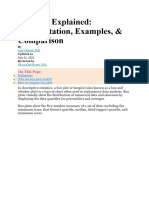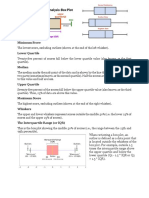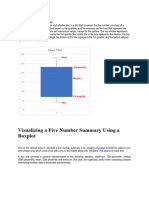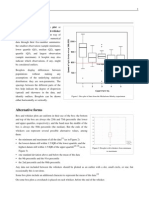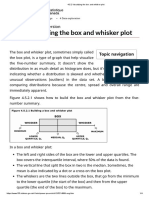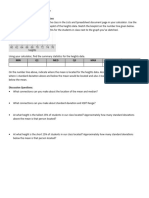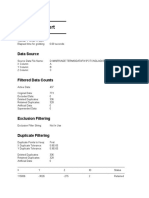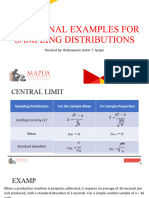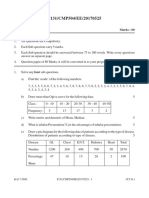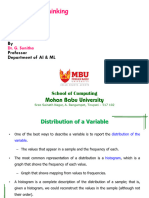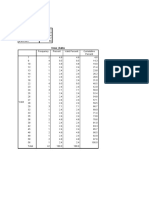0% found this document useful (0 votes)
13 views3 pagesDetailed Boxplot Explanation
A boxplot, or box-and-whisker plot, is a statistical graph that summarizes data by showing its median, spread, outliers, and symmetry. It is useful for researchers to compare groups, identify skewness, and visualize data variation. The boxplot is constructed using five key values: minimum, first quartile (Q1), median, third quartile (Q3), and maximum.
Uploaded by
ijazhussain6549Copyright
© © All Rights Reserved
We take content rights seriously. If you suspect this is your content, claim it here.
Available Formats
Download as DOCX, PDF, TXT or read online on Scribd
0% found this document useful (0 votes)
13 views3 pagesDetailed Boxplot Explanation
A boxplot, or box-and-whisker plot, is a statistical graph that summarizes data by showing its median, spread, outliers, and symmetry. It is useful for researchers to compare groups, identify skewness, and visualize data variation. The boxplot is constructed using five key values: minimum, first quartile (Q1), median, third quartile (Q3), and maximum.
Uploaded by
ijazhussain6549Copyright
© © All Rights Reserved
We take content rights seriously. If you suspect this is your content, claim it here.
Available Formats
Download as DOCX, PDF, TXT or read online on Scribd
/ 3



















